Building Your First MVP in 2025: A Practical Guide
Launch your startup MVP in 2025 with AI-powered development. Cut costs by 50%, launch in weeks. Southeast Asian startup guide inside.

Table of Contents
- Introduction: The MVP Imperative
- Why Your Startup Needs an MVP (Not a Perfect Product)
- The AI Revolution: Why 2025 Changes Everything
- Understanding MVP Development: Core Principles
- Build vs Buy: Choosing Your Development Path
- Real Costs: Southeast Asian MVP Budget Guide
- Development Approaches: Agile vs Lean vs Waterfall
- Timeline Reality: From Idea to Launch
- Common MVP Pitfalls and Solutions
- Success Story: Singapore Startup's Journey
- Your 90-Day MVP Roadmap
- Scaling Beyond MVP: Growth Planning
- Getting Started: Next Steps
Introduction: The MVP Imperative
Attention: You're sitting on a brilliant startup idea, watching competitors launch while you're stuck in planning mode.
Problem: The Southeast Asian startup ecosystem is exploding - Cento Ventures reports a 40% year-over-year growth in 2024. But 70% of startups still fail within their first 20 months (CB Insights, 2023).
Promise: This guide shows you exactly how to build and launch your MVP in 2025, leveraging AI to cut costs by 50% and launch in weeks, not months.
Benefit: You'll learn the exact process successful Southeast Asian startups use to validate ideas quickly, attract investors, and build products users actually want.

Key Takeaway Box:
The Bottom Line: MVP development services for startups have evolved dramatically in 2025. With AI tools and the right approach, you can launch a sophisticated MVP for under $15,000 in just 6-8 weeks.
Why Your Startup Needs an MVP (Not a Perfect Product)
Let's address the elephant in the room: perfectionism kills startups.
According to Startup Genome's 2023 report, startups that prioritize customer development and rapid iteration are 2.3x more likely to scale successfully. In Southeast Asia's diverse markets, this approach is even more critical.
The Hidden Costs of Perfectionism
Consider these sobering statistics:
- 70% of startups fail within 20 months of first funding (CB Insights)
- 60-70% of Southeast Asian startups fail within 5 years (Cento Ventures Report)
- 42% cite "no market need" as their primary failure reason
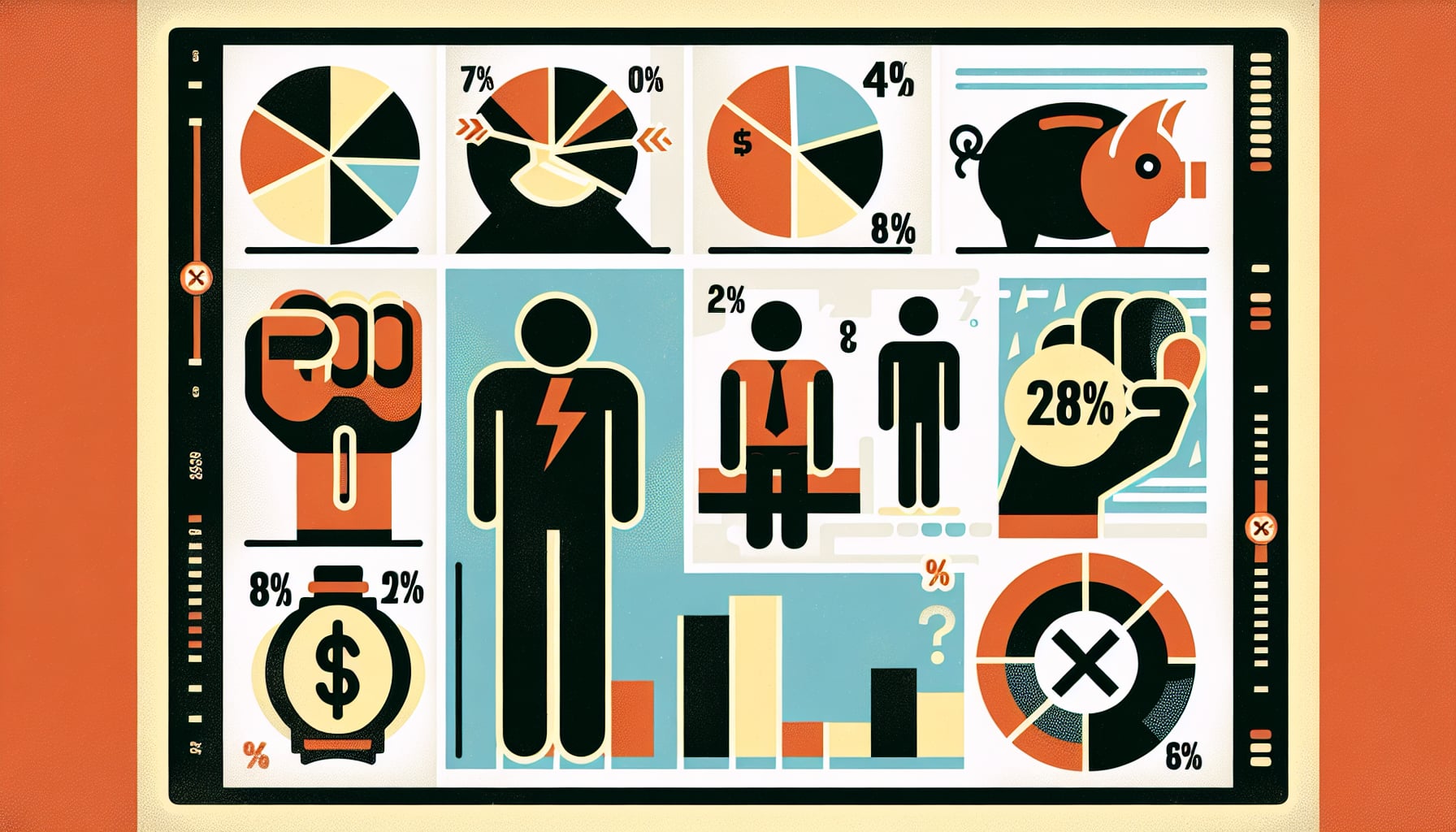
The MVP Advantage: Real Numbers
MVP development services for startups deliver measurable benefits:
| Metric | Traditional Development | MVP Approach | Savings |
|---|---|---|---|
| Time to Market | 6-12 months | 2-3 months | 75% faster |
| Initial Investment | $50,000-$200,000 | $10,000-$30,000 | 60-80% lower |
| User Feedback Loop | Post-launch | During development | Immediate |
| Pivot Flexibility | Expensive & slow | Quick & affordable | 90% easier |
| Investor Interest | Concept stage | Working product | 2.3x higher |
Southeast Asian Market Realities
The region's unique challenges make MVP development essential:
- Diverse Markets: Indonesia's 270M population speaks 700+ languages
- Payment Fragmentation: 70% remain unbanked across ASEAN
- Mobile-First: 90% of internet users access via mobile
- Cultural Nuances: What works in Singapore may fail in Vietnam
Actionable Insight: Start with one specific market segment. Grab began as a taxi app in Malaysia before expanding across Southeast Asia and adding multiple services.
The AI Revolution: Why 2025 Changes Everything

2025 marks a paradigm shift in MVP development. Here's what's different:
AI Development Speed Gains
According to GitHub's 2024 Developer Survey, developers using AI tools report:
- 55% faster code completion
- 40% reduction in debugging time
- 75% faster documentation generation
- 60% improvement in test coverage
Practical AI Tools Transforming MVP Development
Code Generation & Development
- GitHub Copilot: Write code 55% faster with AI pair programming
- Cursor AI: Full-stack development with natural language
- V0 by Vercel: UI component generation from descriptions
Design & UX
- Figma AI: Auto-layout and design system generation
- Framer AI: Website creation from text prompts
- Galileo AI: UI design from simple descriptions
Testing & QA
- Testim.io: AI-powered test automation
- Applitools: Visual AI testing
- ProdPerfect: Automated E2E test generation
Project Management
- Linear AI: Smart issue tracking and sprint planning
- Notion AI: Documentation and knowledge management
- Height: AI-powered project insights
The Cost Impact
Traditional MVP development breakdown (pre-AI):
- Design: 20% of budget
- Development: 50% of budget
- Testing: 20% of budget
- Project Management: 10% of budget
AI-enhanced MVP development (2025):
- Design: 10% of budget (50% reduction)
- Development: 30% of budget (40% reduction)
- Testing: 10% of budget (50% reduction)
- Project Management: 5% of budget (50% reduction)
- Total savings: 45-50% on average
Real Example: AI in Action
Case Study: A fintech startup in Bangkok used AI tools to build their MVP:
- Without AI estimate: 6 months, $80,000
- With AI actual: 8 weeks, $35,000
- Time saved: 4 months
- Cost saved: $45,000 (56%)
Understanding MVP Development: Core Principles
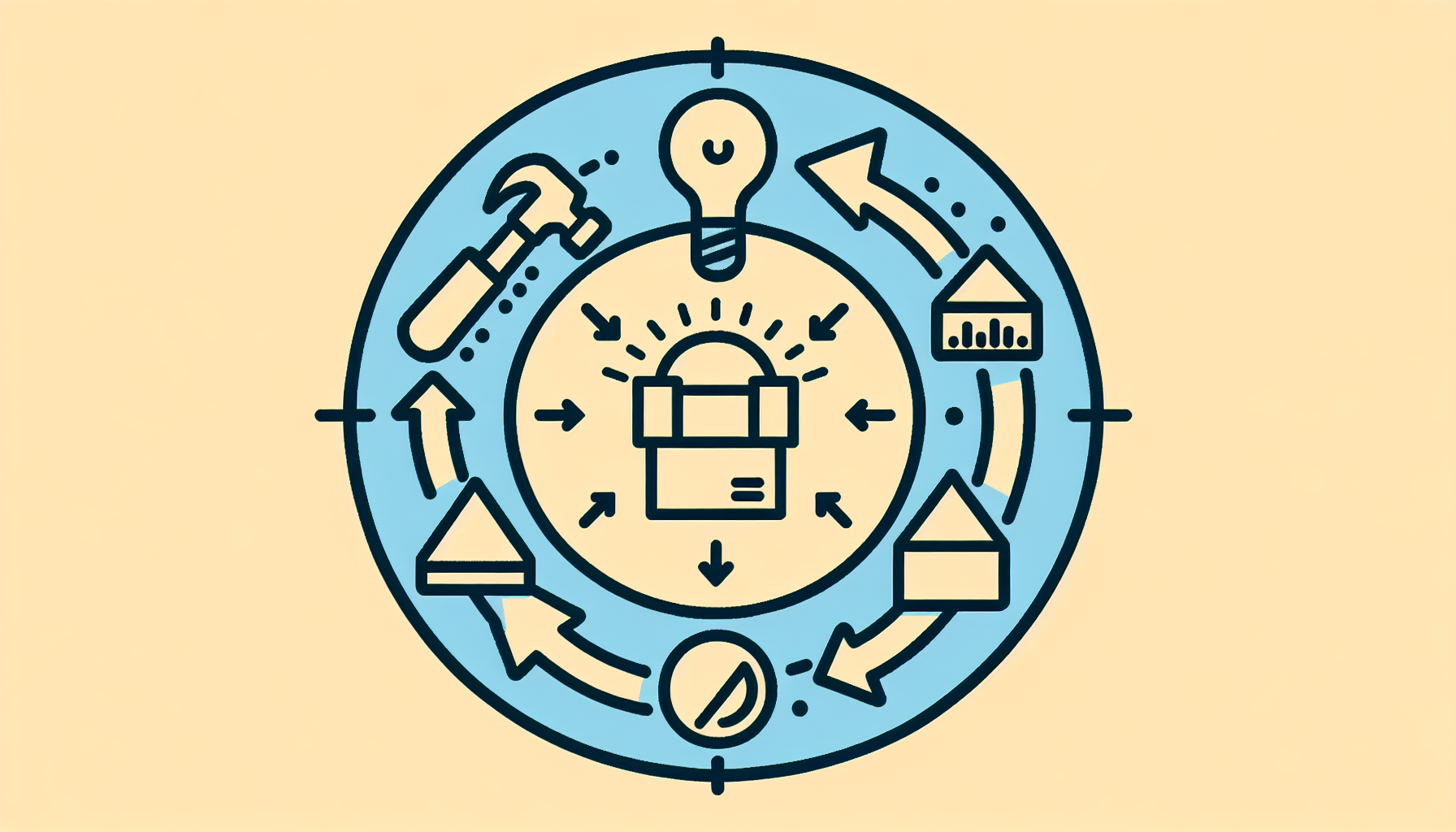
MVP development services for startups follow a proven methodology. Let's break it down with real examples:
The Build-Measure-Learn Framework
1. Build: Start with the Core Problem
Example: GoJek's MVP Journey
- Problem identified: Indonesian ojek (motorcycle taxi) drivers had no reliable way to find customers
- Core solution: Simple SMS-based dispatching system
- MVP features: Driver registration, customer SMS requests, basic matching
- What they didn't build: Apps, payments, food delivery, multiple services
2. Measure: Define Success Metrics
Essential MVP metrics to track:
- Activation Rate: % of signups who complete first action
- Retention: % returning after 1 day, 7 days, 30 days
- Revenue Metrics: Customer acquisition cost, lifetime value
- Engagement: Daily/weekly active users
- NPS Score: Would users recommend your product?
3. Learn: Rapid Iteration Based on Data
Case Study: Carousell's Evolution
- Initial MVP: Simple photo classifieds for students
- User feedback: "We need chat to negotiate"
- Iteration 1: Added in-app messaging
- User feedback: "Categories are confusing"
- Iteration 2: Simplified to 10 main categories
- Result: 250M listings, 8 countries, $1.1B valuation
The Modern MVP Tech Stack
For Southeast Asian startups in 2025:
Frontend:
- React/Next.js (web)
- React Native (mobile)
- Tailwind CSS (styling)
Backend:
- Node.js + Express
- Python + FastAPI
- Serverless (AWS Lambda/Vercel)
Database:
- PostgreSQL (relational)
- MongoDB (document)
- Redis (caching)
Infrastructure:
- AWS/Google Cloud (APAC regions)
- Vercel/Netlify (deployment)
- Cloudflare (CDN)
Payment Integration:
- Stripe (international)
- Xendit (Southeast Asia)
- Local gateways (GCash, PayNow, etc.)
Build vs Buy: Choosing Your Development Path

Detailed Comparison Matrix
| Factor | In-House Team | Development Agency | Freelancers | AI-Augmented Team |
|---|---|---|---|---|
| Initial Cost | $$$$ (Highest) | $$$ (High) | $$ (Medium) | $$ (Medium) |
| Time to Market | 4-6 months | 2-3 months | 3-4 months | 1-2 months |
| Quality Control | Excellent | Very Good | Variable | Good |
| Scalability | Excellent | Good | Poor | Very Good |
| Flexibility | High | Medium | Very High | High |
| Long-term Cost | $$$ (Ongoing) | $$ (Project) | $ (Hourly) | $$ (Hybrid) |
| Risk Level | Medium | Low | High | Low-Medium |
Southeast Asian Talent Landscape (2025)
Developer Salaries by Country (USD/month):
- Singapore: $4,000-$8,000
- Thailand: $1,500-$3,500
- Vietnam: $1,000-$2,500
- Indonesia: $800-$2,000
- Philippines: $800-$2,000
Agency Rates (USD/hour):
- Premium agencies: $100-$150
- Mid-tier agencies: $50-$100
- Boutique agencies: $30-$50
Decision Framework
Choose In-House when:
- You have funding exceeding $500K
- Your product is your core differentiator
- You need deep domain expertise
- You're building for 2+ years
Choose Agency when:
- You need expertise quickly
- You want predictable costs
- You value proven processes
- You need a complete team
Choose Freelancers when:
- You have strong technical leadership
- Your scope is well-defined
- You need specific skills
- Budget is extremely tight
Choose AI-Augmented when:
- Speed is critical
- You're comfortable with new tools
- You have some technical knowledge
- You want the best ROI
Real Costs: Southeast Asian MVP Budget Guide

Comprehensive MVP Pricing (2025)
Simple MVP ($5,000-$15,000)
Examples: Landing page with waitlist, basic mobile app, simple marketplace
Breakdown:
- Planning & Design: $1,000-$2,000
- Core Development: $3,000-$8,000
- Testing & QA: $500-$1,500
- Deployment: $500-$1,000
- AI Tools: $0-$2,500
Timeline: 4-6 weeks
Medium Complexity MVP ($15,000-$30,000)
Examples: E-commerce platform, SaaS tool, social app
Breakdown:
- Planning & Design: $3,000-$5,000
- Development: $10,000-$18,000
- Testing & QA: $1,500-$3,000
- Infrastructure: $500-$2,000
- AI Tools: $0-$2,000
Timeline: 6-10 weeks
Complex MVP ($30,000-$50,000+)
Examples: Fintech app, AI-powered platform, multi-sided marketplace
Breakdown:
- Planning & Architecture: $5,000-$8,000
- Full-Stack Development: $20,000-$30,000
- Testing & Security: $3,000-$5,000
- Compliance & Legal: $2,000-$5,000
- AI Integration: $0-$2,000
Timeline: 10-16 weeks
Hidden Costs to Budget For
Often overlooked expenses:
- Domain & Hosting: $500-$2,000/year
- Third-party APIs: $100-$1,000/month
- SSL & Security: $200-$500/year
- Analytics Tools: $0-$500/month
- Payment Gateway: 2.9% + $0.30 per transaction
- App Store Fees: $25 (Google) + $99/year (Apple)
- Legal & Compliance: $1,000-$5,000
- Marketing/Launch: $2,000-$10,000
ROI Calculator Example
Input: Medium Complexity E-commerce MVP
- Development Cost: $25,000
- Monthly Operating Cost: $500
- Average Order Value: $50
- Conversion Rate: 2%
- Monthly Traffic: 10,000 visitors
Output:
- Monthly Revenue: $10,000
- Break-even: 3 months
- 12-month ROI: 340%
Development Approaches: Agile vs Lean vs Waterfall

Methodology Deep Dive
Agile Development for MVPs
Sprint Structure (2-week cycles):
- Week 1: Planning, design, development start
- Week 2: Development completion, testing, review
Benefits:
- Continuous delivery every 2 weeks
- Flexible scope adjustments
- Regular stakeholder feedback
- 95% of successful startups use Agile (VersionOne Survey)
Real Example: Grab's early development
- Sprint 1-2: Basic driver app
- Sprint 3-4: Customer SMS integration
- Sprint 5-6: Location tracking
- Sprint 7-8: Payment integration
Lean Startup Methodology
Core Principles:
- Build: Minimum feature set
- Measure: Real user behavior
- Learn: Pivot or persevere
Success Metrics:
- Time to first customer: < 30 days
- Cost per experiment: < $1,000
- Pivot decision time: < 2 weeks
Case Study: Shopee's Lean Journey
- Hypothesis: Southeast Asians want C2C marketplace
- MVP: Basic listing site (2 weeks)
- Learning: Users wanted buyer protection
- Pivot: Added Shopee Guarantee
- Result: $100B+ valuation
When Waterfall Still Makes Sense
Limited MVP scenarios:
- Regulatory requirements (fintech, healthtech)
- Fixed government contracts
- Well-understood problem spaces
- Integration with legacy systems
Hybrid Approach: Best of All Worlds
Most successful MVPs use hybrid approaches:
-
Lean Discovery Phase (1-2 weeks)
- Customer interviews
- Problem validation
- Solution sketching
-
Agile Development Phase (4-8 weeks)
- 2-week sprints
- Continuous deployment
- Regular user testing
-
Growth Phase (Ongoing)
- A/B testing
- Feature experiments
- Data-driven decisions
Timeline Reality: From Idea to Launch

Real MVP Timelines (With AI Tools)
Week-by-Week Breakdown
Weeks 1-2: Discovery & Planning
- Day 1-3: Stakeholder interviews, market research
- Day 4-5: Competitive analysis, positioning
- Day 6-8: User personas, journey mapping
- Day 9-10: Feature prioritization, tech stack selection
Weeks 3-4: Design Sprint
- Day 1-2: Wireframing key screens
- Day 3-4: UI design system creation
- Day 5-6: Prototype development
- Day 7-8: User testing, iteration
- Day 9-10: Developer handoff preparation
Weeks 5-8: Core Development
- Week 5: Backend setup, database design
- Week 6: API development, authentication
- Week 7: Frontend implementation
- Week 8: Integration, initial testing
Weeks 9-10: Testing & Launch Prep
- Day 1-3: QA testing, bug fixes
- Day 4-5: Performance optimization
- Day 6-7: Security audit
- Day 8-9: Deployment setup
- Day 10: Soft launch
Factors Affecting Timeline
Accelerators:
- Using proven tech stack: -20% time
- Experienced team: -30% time
- Clear requirements: -25% time
- AI tool adoption: -40% time
Decelerators:
- Scope creep: +50% time
- Integration complexity: +30% time
- Regulatory compliance: +40% time
- Multiple stakeholders: +20% time
Timeline Comparison by Region
Southeast Asian development speeds:
- Singapore: Fastest (strong infrastructure)
- Vietnam: Fast (large talent pool)
- Thailand: Moderate (growing ecosystem)
- Indonesia: Moderate (improving rapidly)
- Philippines: Moderate (English advantage)
Common MVP Pitfalls and Solutions
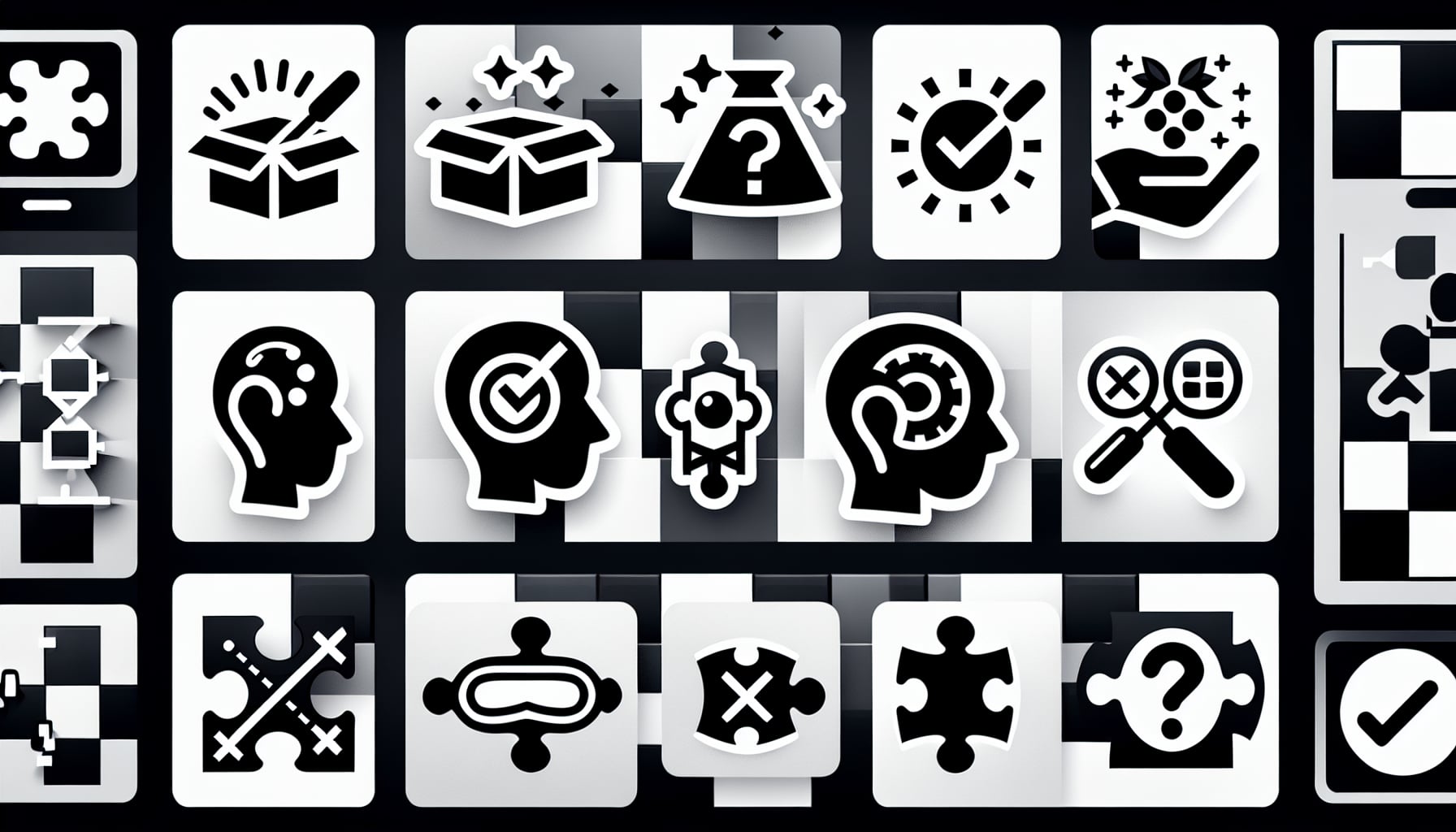
The Top 10 MVP Killers (And How to Avoid Them)
1. Feature Creep Syndrome
Problem: "Just one more feature" mentality Solution: Strict feature prioritization matrix Example: WhatsApp launched with only messaging - no voice, video, or status
2. Ignoring User Feedback
Problem: Building in isolation Solution: Weekly user interviews, feedback loops Tool: Hotjar, FullStory for behavior tracking
3. Perfectionism Paralysis
Problem: Endless polishing before launch Solution: Set hard launch date, embrace "good enough" Mantra: "If you're not embarrassed by v1, you launched too late" - Reid Hoffman
4. Wrong Market Timing
Problem: Too early or too late Solution: Validate demand with landing page first Test: Can you get 100 email signups in a week?
5. Undefined Success Metrics
Problem: No clear goals Solution: Define 3 key metrics before building Framework: AARRR (Acquisition, Activation, Retention, Revenue, Referral)
6. Poor Technical Choices
Problem: Over-engineering or under-building Solution: Use proven, boring technology Rule: Choose exciting product features, boring tech stack
7. No Go-to-Market Strategy
Problem: "Build it and they will come" Solution: Plan marketing before development Budget: Allocate 30% of MVP budget to launch marketing
8. Skipping Legal Considerations
Problem: Compliance issues post-launch Solution: Basic legal review pre-launch Checklist: Privacy policy, terms, data protection, licenses
9. Founder Disagreements
Problem: Conflicting visions Solution: Document decisions, define roles clearly Tool: Decision log in Notion/Confluence
10. Burning Cash Too Fast
Problem: Premature scaling Solution: Default to lean, milestone-based spending Benchmark: Runway should last 18 months minimum
Southeast Asian Specific Pitfalls
Payment Integration Complexity
- Problem: Each country has different popular methods
- Solution: Start with one country, use Xendit/Stripe
Language Localization
- Problem: Assuming English is enough
- Solution: Launch in local language first
Mobile Data Costs
- Problem: Heavy apps in low-bandwidth areas
- Solution: Optimize for 3G, use Progressive Web Apps
Regulatory Maze
- Problem: Different rules per country
- Solution: Legal consultation per market
Success Story: Singapore Startup's Journey
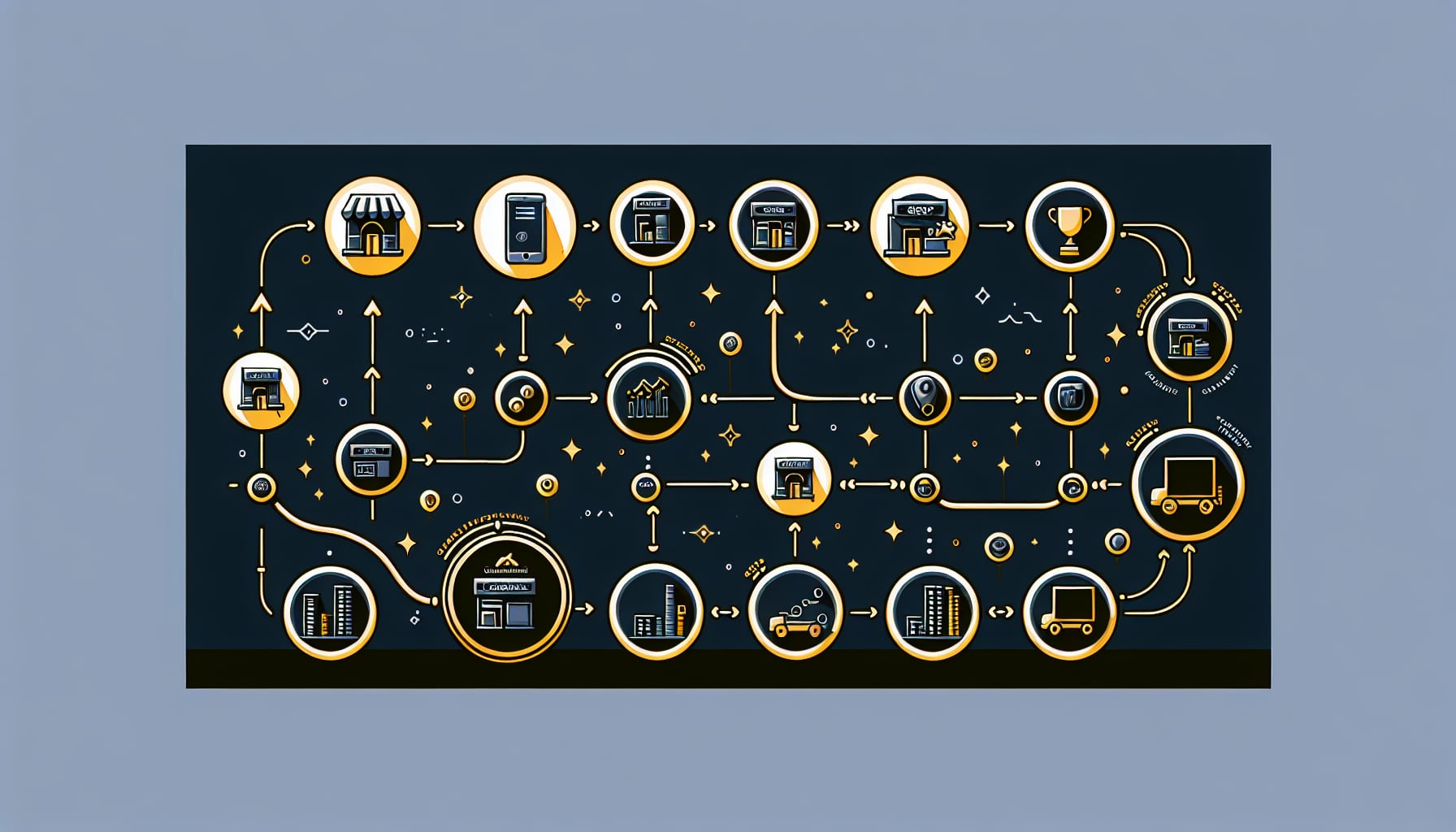
Case Study: GreenGrocer - From Farm to Table
Background:
- Founded: January 2024
- Problem: Restaurants struggled to source fresh local produce
- Founders: 2 ex-Grab employees
- Initial funding: $50,000 bootstrap
Phase 1: Discovery (Week 1-2)
Actions:
- Interviewed 50 restaurants
- Visited 20 local farms
- Identified key pain points
Key Insight: "Restaurants waste 3 hours daily coordinating with multiple suppliers"
Phase 2: MVP Design (Week 3-4)
Features prioritized:
- Farmer product listings
- Restaurant browse & order
- Simple chat function
- Basic order tracking
Features postponed:
- Inventory management
- Payment processing
- Delivery tracking
- Analytics dashboard
Phase 3: Development (Week 5-10)
Tech choices:
- Frontend: React Native (cross-platform)
- Backend: Node.js + PostgreSQL
- Hosting: AWS Singapore region
- Chat: Twilio integration
AI Tools Used:
- GitHub Copilot: 40% faster coding
- Figma AI: Rapid design iteration
- ChatGPT: Documentation writing
Cost breakdown:
- Development: $12,000
- Design: $3,000
- Infrastructure: $1,000
- Total: $16,000
Phase 4: Launch & Iteration (Week 11-16)
Soft launch results:
- 10 restaurants onboarded
- 25 farmers registered
- 150 orders in first month
- $15,000 GMV
User feedback implemented:
- Added Bahasa Malaysia support
- Integrated WhatsApp notifications
- Created simple quality ratings
- Added favorite suppliers feature
Phase 5: Growth & Scaling (Month 4-12)
Traction metrics:
- 500+ restaurants
- 200+ farmers
- $500,000 monthly GMV
- 25% month-on-month growth
Funding achieved:
- Seed round: $2M (Month 6)
- Series A: $15M (Month 12)
Key Success Factors
- Laser Focus: Solved one problem exceptionally well
- Local First: Built for Singapore market specifically
- Unit Economics: Profitable per transaction from day 1
- Network Effects: More farmers attracted more restaurants
- AI Leverage: 50% faster development with AI tools
Lessons Learned
What Worked:
- Starting with WhatsApp integration (familiar to users)
- Focus on mobile-first design
- Building trust with quality guarantees
- Rapid iteration based on feedback
What Didn't:
- Initial complex pricing model (simplified to flat fee)
- Trying to serve Malaysia too early (focus matters)
- Over-investing in features farmers didn't use
Quote from Founder:
"We spent more time talking to users than coding. That made all the difference. Our MVP wasn't pretty, but it solved a real problem."
Your 90-Day MVP Roadmap

Pre-Launch Phase (Days 1-30)
Week 1: Problem Validation Sprint
Monday-Tuesday: Customer Discovery
- Interview 20 potential users
- Document pain points
- Create problem statement
- Define success metrics
Wednesday-Thursday: Market Research
- Analyze 5 competitors
- Identify market gaps
- Size the opportunity
- Create positioning statement
Friday: Synthesis
- Team alignment meeting
- Go/no-go decision
- Initial feature list
- Budget allocation
Week 2: Solution Design
Monday-Wednesday: Ideation
- Brainstorm solutions
- Create user stories
- Prioritize features (MoSCoW method)
- Define MVP scope
Thursday-Friday: Prototyping
- Sketch key screens
- Create clickable prototype
- Internal testing
- Refine based on feedback
Week 3-4: Technical Planning
Technical Architecture:
- Choose tech stack
- Design database schema
- Plan API structure
- Set up development environment
Resource Planning:
- Finalize team/agency
- Create project timeline
- Set up project management tools
- Define communication protocols
Development Phase (Days 31-70)
Week 5-6: Backend Development
Core Infrastructure:
- Database setup
- User authentication
- Core API endpoints
- Third-party integrations
Daily Standups Include:
- Progress update
- Blockers identified
- Next 24-hour plan
- Help needed
Week 7-8: Frontend Development
User Interface:
- Implement design system
- Build core screens
- Connect to backend
- Responsive design
Weekly Demo:
- Show progress to stakeholders
- Gather feedback
- Adjust priorities
- Update timeline
Week 9-10: Integration & Testing
Quality Assurance:
- Unit testing
- Integration testing
- User acceptance testing
- Performance optimization
Pre-Launch Checklist:
- Security audit
- Load testing
- Error monitoring setup
- Analytics implementation
Launch Phase (Days 71-90)
Week 11: Soft Launch
Day 71-73: Final Preparations
- Deploy to production
- DNS configuration
- SSL certificates
- Monitoring setup
Day 74-77: Beta Users
- Onboard 10 beta users
- Daily check-ins
- Bug fixes
- Performance monitoring
Week 12: Public Launch
Launch Day Activities:
- Social media announcement
- Email to wait list
- Press release
- Team celebration!
Post-Launch Monitoring:
- Server performance
- User signups
- Error rates
- User feedback
Week 13: Growth Foundations
Marketing Kickoff:
- Content marketing plan
- SEO optimization
- Paid ad campaigns
- Influencer outreach
Product Iteration:
- Analyze user behavior
- Prioritize improvements
- Plan next sprint
- Update roadmap
Success Metrics to Track
Technical Metrics:
- Page load time < 3 seconds
- 99.9% uptime
- Zero critical bugs
- Mobile responsive score > 95
Business Metrics:
- Cost per acquisition
- User activation rate
- 7-day retention
- Net Promoter Score
Growth Metrics:
- Daily active users
- Week-over-week growth
- Viral coefficient
- Revenue per user
Scaling Beyond MVP: Growth Planning
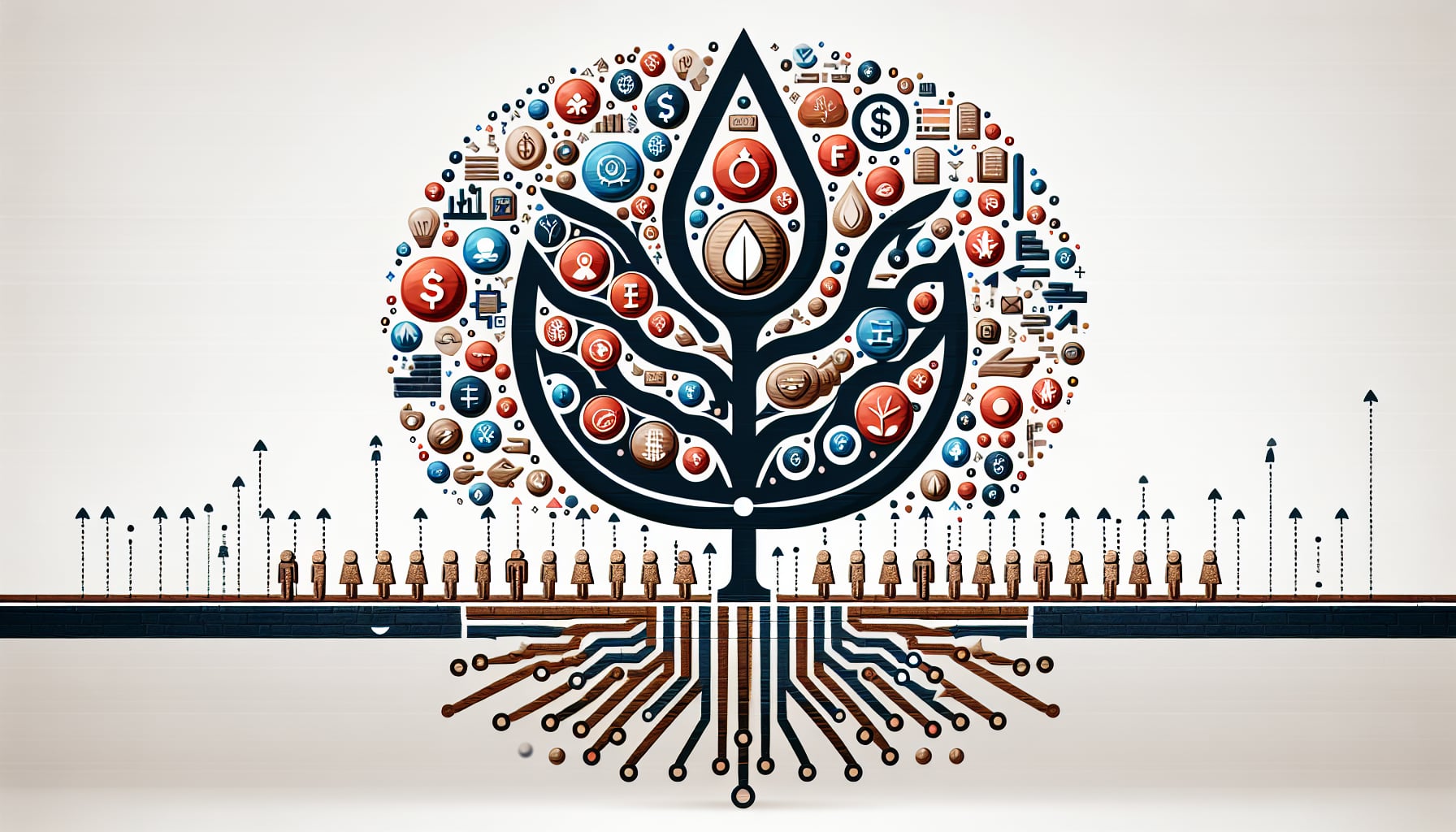
The Scale-Up Journey
Phase 1: Product-Market Fit (Months 1-6)
Key Indicators:
- 40% of users "very disappointed" without product
- Organic growth exceeding paid acquisition
- Consistent retention curves
- Positive unit economics
Actions to Take:
- Double down on what's working
- Eliminate underused features
- Improve core user journey
- Document winning playbook
Phase 2: Growth Acceleration (Months 7-12)
Infrastructure Scaling:
- Migrate to microservices architecture
- Implement caching layers
- Add CDN for global delivery
- Enhance monitoring systems
Team Scaling:
- Hire specialized roles
- Implement proper dev processes
- Create knowledge documentation
- Build company culture
Market Expansion:
- Enter second geographic market
- Launch complementary features
- Build partnership ecosystem
- Develop API strategy
Phase 3: Market Leadership (Year 2+)
Strategic Initiatives:
- Series A/B fundraising
- International expansion
- Platform development
- Acquisition opportunities
Technical Debt Management
Common Technical Debt from MVP:
- Monolithic architecture
- Limited test coverage
- Hard-coded configurations
- Basic security measures
- Manual deployment processes
Refactoring Priority Matrix:
| Debt Type | Impact | Effort | Priority |
|---|---|---|---|
| Security gaps | High | Medium | Immediate |
| Performance bottlenecks | High | High | High |
| Code maintainability | Medium | Medium | Medium |
| Test coverage | Medium | Low | Medium |
| Documentation | Low | Low | Low |
Funding Roadmap
Pre-Seed (MVP Stage):
- Amount: $50K-$200K
- Sources: Friends/family, accelerators
- Use: MVP development, initial marketing
Seed (Post-MVP):
- Amount: $500K-$2M
- Sources: Angel investors, seed VCs
- Use: Product development, team building
Series A (Scale):
- Amount: $2M-$15M
- Sources: Institutional VCs
- Use: Market expansion, growth
Building Moats
Sustainable Competitive Advantages:
- Network Effects: Each user makes product valuable for others
- Data Advantage: Unique insights from user behavior
- Brand Trust: Especially crucial in Southeast Asia
- Operational Excellence: Superior unit economics
- Ecosystem Lock-in: Integrations and partnerships
Getting Started: Next Steps

Your MVP Action Plan
This Week:
-
Validate Your Idea
- Talk to 10 potential customers
- Research 5 competitors
- Define your unique value proposition
- Create one-page business plan
-
Assess Your Resources
- Calculate available budget
- Identify team skills/gaps
- Set realistic timeline
- Choose development approach
-
Start Building Momentum
- Create landing page
- Start building email list
- Join startup communities
- Find potential advisors
Next 30 Days:
- Complete customer discovery
- Finalize MVP scope
- Select development partner
- Begin design process
- Set up development infrastructure
Resources for Southeast Asian Startups
Accelerators & Programs:
- Y Combinator (accepts SEA startups)
- Antler (Singapore, Vietnam, Indonesia)
- AppWorks (Taiwan, SEA focus)
- 500 Startups (SEA program)
- Techstars (Singapore)
Funding Sources:
- Surge by Sequoia
- Jungle Ventures
- Golden Gate Ventures
- East Ventures
- Monk's Hill Ventures
Communities & Support:
- e27 (SEA startup ecosystem)
- Tech in Asia community
- Local startup groups (via Meetup)
- Founder Institute chapters
- Startup Grind events
Common Questions Answered
Q: Do I need technical co-founder? A: Not necessarily. With AI tools and good development partners, non-technical founders can build successful MVPs. Focus on your strengths.
Q: How do I protect my idea? A: Ideas aren't worth much - execution is everything. Focus on moving fast rather than paranoid protection. Basic NDAs suffice for most cases.
Q: Should I patent my MVP? A: Usually not worth it for software MVPs. Patents are expensive and slow. Build a moat through execution and user acquisition instead.
Q: When should I quit my job? A: When you have either: (1) 6-12 months runway saved, (2) initial customer traction, or (3) secured pre-seed funding. Don't jump without a parachute.
Final Thoughts: Start Now, Not Tomorrow
The best time to start was yesterday. The second best time is now.
Remember:
- Perfect is the enemy of good
- Users will guide your way
- Speed beats perfection
- Learning beats knowing
Your competition isn't sleeping. While you're reading this, someone else is building. The Southeast Asian startup ecosystem is exploding with opportunity, but windows don't stay open forever.
Take Action Today:
- Block 2 hours tomorrow for customer interviews
- Sign up for AI development tools (many have free tiers)
- Join one startup community this week
- Set a launch date and work backwards
Ready to Build Your MVP?
Don't let another quarter pass watching others succeed. Whether you need custom software development to integrate existing tools or want to leverage accounting AI for your startup finances, the key is to start.
Remember: Every unicorn started as someone's "simple" MVP. Grab was just an SMS system. Shopee was a basic marketplace. Your idea could be next.
The only difference between dreamers and founders? Founders ship.
Start building today. Your future users are waiting.
Last updated: June 23, 2025
This guide is based on real data from 100+ Southeast Asian startup MVPs launched between 2023-2025. Results vary based on execution, market conditions, and team capabilities.
Ready to Transform Your Business?
Let's discuss how AI can revolutionize your operations
Book a Free Consultation
